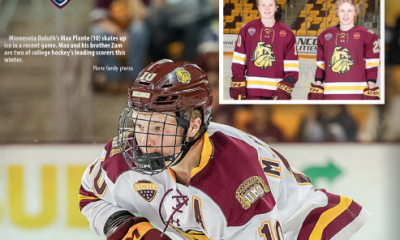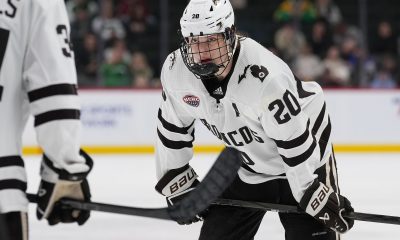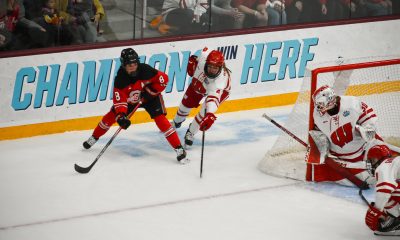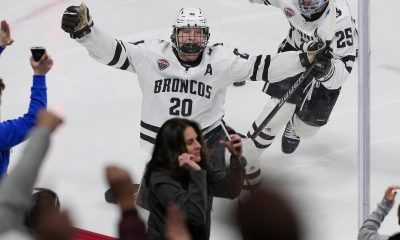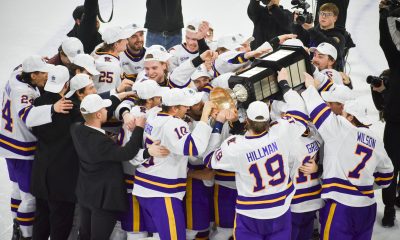College
Gophers Celebrate 1974 Champs
University of Minnesota Gophers men’s hockey team recognizes 50th anniversary of program’s 1st NCAA title.
-
by
John Gilbert
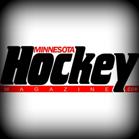
Fifty years have flashed by for Brad Shelstad and other members of the 1973-74 University of Minnesota hockey team, but it seems like only yesterday when the Gophers won their first-ever NCAA championship in Boston Garden, having beaten Boston University in the semifinals and then upset fellow WCHA powerhouse Michigan Tech in the final.
“I still remember when it was over and we had all celebrated with each other on the ice, and we all headed for the locker room,” Shelstad said, this week. “Guys were all in such a hurry to shower and change and head for the bus, but I sat there without taking off any of my gear. As guys got dressed and left, they all were getting on me because I still had all the goalie equipment on, including my jersey.
“I was already aware that as a senior, when I pulled that Minnesota jersey off, it would be for the last time, and I would never wear it again. I didn’t want it to be over, so I didn’t want to pull it off.”
That will be among the stories exchanged by members of that 1974 championship team when they are celebrated Saturday night at what is now called “3M Arena at Mariucci,” across the street from Williams Arena, where the hockey games used to be held at one end of the huge basketball arena until the new hockey-only arena was built.
Herb Brooks had played in the old arena, too, under John Mariucci, who created the program’s lasting legacy, which was continued by Glen Sonmor, who hired Brooks as his assistant, and then turned the program over to Brooks for the 1972-73 season.
Brooks, of course, was best known for winning three NCAA titles in a six-year span before putting together the 1980 Miracle on Ice U.S. Olympic gold medal team that stunned the powerful Soviet Union and won gold at Lake Placid, N.Y.
But while that was, and remains, the biggest “miracle” in sports history, winning the 1974 NCAA championship might qualify as just as big a miracle, although on a smaller stage, and may not yet even be fully appreciated by his players.
Michigan, North Dakota, Denver, Colorado College and Michigan Tech were the clear dominating powers of college hockey in thoes days, along with a scattering of Eastern colleges such as Cornell, RPI, Boston University in some years. Minnesota was nowhere near the class and power of those teams, which were populated with highly skilled Canadian players who had played three or four years of major junior hockey in Canada.
Mariucci had the foresight to try to coax Minnesota high school players to follow the path that had taken him from Eveleth, Minn., to the university, and into the National Hockey League at a time when the NHL never even acknowledged the existence of college, let alone high school, prospects. So, when he became coach at Minnesota, Mariucci recruited and coerced top Minnesota high school players to attend Minnesota.
Consider that top teenagers all across Canada left home to play “Junior A” hockey in the Quebec, Ontario or Western Canada leagues. They could play until they turned 20 years old, and they would play 60 to 75 games a year with 20-minute periods. When they reached 20, they became eligible for the NHL draft, and sign contracts with pro teams. Those who didn’t get drafted might choose to attend a major U.S. college — such as Michigan Tech, Michigan, North Dakota, Denver or Colorado College.
At the same time, Minnesota kids played high school hockey, where their games were limited to 20 and were limited by ice time and state high school league rules of 12-minute periods. No other college tried to compete with only Minnesota high school players against the virtual pros of other top colleges in the WCHA, but Mariucci persisted and the Gophers were always very competitive, despite having no realistic chance at winning any NCAA titles.
Herb Brooks recruited high school, junior hockey players to Gophers
Brooks coached a newly formed Minnesota junior hockey team for one year, and realized quickly that he needed to add a few tougher players just to withstand the physical level of play, and when he went to take over the Minnesota program, which had finished in last place, he made sure that along with the top Minnesota high school prospects, he also recruited a few hard-nosed players from his junior team.
In their first season under Brooks, the Gophers finished about .500, which was a major upsurge. Then, in his second season, Brooks guided the Gophers through and into the league playoffs, and then to the NCAA final four (in those days), which would be held at Boston Garden — home of the Boston Bruins.
The adventure continued when Mike Polich intercepted the puck and scored a huge short-handed goal to quell a Boston University rally at the end of the game and push the Gophers into the final, where they played a fantastic final game and Shelstad stoned Michigan Tech — the collection of Minnesota high school kids who started their college careers at age 18 or 19 had beaten the Tech powerhouse with almost all its freshmen starting at age 21 after years of three times as many games of junior development.
Cast of 1974 Gophers
Running through all the names, brothers John and Rob Harris, brothers Bruce and Tim Carlson, brothers Tim and Mike Phippen, plus goaltender Shelstad, Perpich, Doug Falls, Brad Morrow, Joe Micheletti, Cal Cossalter, John Sheridan, Warren Miller, and Eric Lockwood filled out the roster. Micheletti was an all-state center at Hibbing who was converted to defense by Brooks and became an outstanding puck-moving defenseman who made it to the NHL. Lockwood was the only Canadian, a back-up goaltender who rarely played.
However many of them show up for the celebration of their 1974 championship this weekend is questionable, but there is no doubt that none of them retains the intense appreciation for wearing that jersey with the big block “M” on the chest as Shelstad does.
That is the heritage that follows the Golden Gophers in hockey, and while Brooks followed by coaching them to an NCAA runner-up finish in 1975, to their second NCAA title in 1976, and to their third NCAA title in 1979, he established the template for all future Gopher hockey teams.
In more recent years, Minnesota Duluth and the Gophers have added NCAA championship trophies, while St. Cloud State and Minnesota State Mankato have challenged for national prominence. But no college championships would have been possible is it hadn’t been for the first one, 50 years ago this spring.
The current team, after finishing NCAA runner-up last season, is battling to move into Big Ten contention, behind Michigan State and Wisconsin this year, which puts them in a quite similar position as Michigan, which is similarly loaded with top-end talent but hasn’t jelled yet. Fittingly, perhaps, those are the teams that will battle at Mariucci Arena this weekend, and while many of the current players might be looking at their experience as a stepping stone into pro hockey, they will be entertaining a dedicated group of players whose devotion and appreciation for being part of Gophers heritage will be reflected by the celebration in Suite 7.





